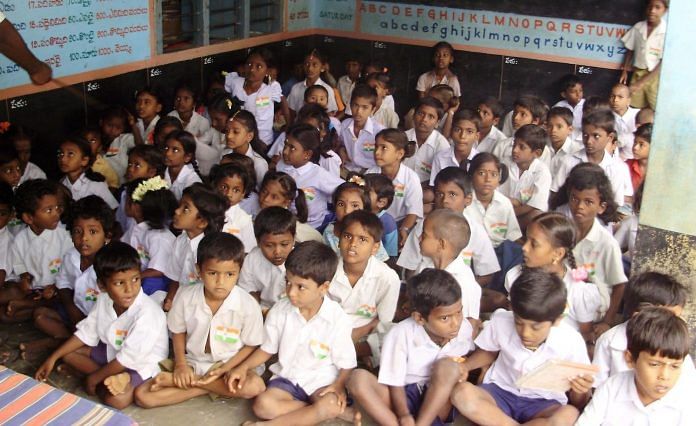New Delhi: India expects all children in primary and lower-secondary levels to be educated by 2030, according to a UNESCO report tracking Sustainable Development Goal-4 (SDG) of ‘Quality Education’ for all by 2030.
This was revealed in the Global Education Monitoring Report released in Paris on the occasion of the International Day of Education on 24 January.
But these targets do not account for the pandemic, which has adversely affected the education sector throughout the world. With schools closed for months, many countries have faltered in their targets.
Also read: Covid impacted 247 mn children in India due to closure of 1.5 mn schools, UNICEF study shows
Nepal is ahead of India in upper secondary education
In terms of early childhood education, it is estimated that all children of age five will be enrolled in schools by 2030. The number is likely to be 80 per cent in the next three years. However, secondary education still remains an area of concern.
The report, listing out the state of India’s education in 2015, showed that 29.9 per cent of students were not enrolled in the upper secondary age group. This was worse than neighbouring Nepal’s rate of 22.7 per cent. The report also revealed that around a third of India’s 16-to-18-year-olds were out of school in 2015.
While India expects all students to complete primary and lower secondary level education by 2030, it expects to increase enrollment in the upper secondary level to 88 per cent from 55.8 per cent in 2015.
According to the national SDG report released by NITI Aayog in June 2021, “Roughly 71.9 per cent of students in Class 8 achieved at least a minimum proficiency level in language and mathematics, in terms of nationally defined learning outcomes.”
The report indicates that these numbers are significantly higher than 2015. That year, 36.5 per cent and 38.8 per cent of students achieved minimum proficiency levels in reading and mathematics at the end of primary education. However, this number is expected to grow to 90 per cent and 85 per cent in 2025.
Lower secondary levels of mathematics proficiency, at 12.3 per cent in 2015, were lower than Bangladesh (31 per cent), Nepal (53.8 per cent), Pakistan (68 per cent) and Sri Lanka (50.6 per cent). But for India, the number is expected to grow over six times to 75 per cent by 2030.
Though this may seem like a huge leap, Manos Antoninis, Director of the Global Education Monitoring Report, told ThePrint: “In the case of learning outcomes, it is observed that countries usually improve at the rate of 0.6 percentage points per year in the share of students that achieve minimum proficiency. But countries that are further behind have been observed progressing at rates even three times faster.”
While the UN recommends at least 4 per cent to 6 per cent of gross domestic product (GDP) or at least 15 per cent to 20 per cent of public expenditure on education by 2030, India is way ahead. India expects to achieve both 6 per cent of GDP allocation to education, which is in line with New Education Policy 2020, and increase in spending on education to achieve these targets.
“In India, it is only a recent achievement that compulsory education has been extended to lower secondary school. In that sense, India is not unlike most other middle-income countries. But we do believe that the recent dramatic expansion of access to primary and lower secondary schools in the past 20 years, one of the fastest ever observed and on such a scale, will translate into more pressure to increase access to upper secondary education in the next few years,” said Antoninis.
(Edited by Manoj Ramachandran)
Also read: Can’t go back to classroom-only teaching, ‘blended learning’ is the future, say experts






